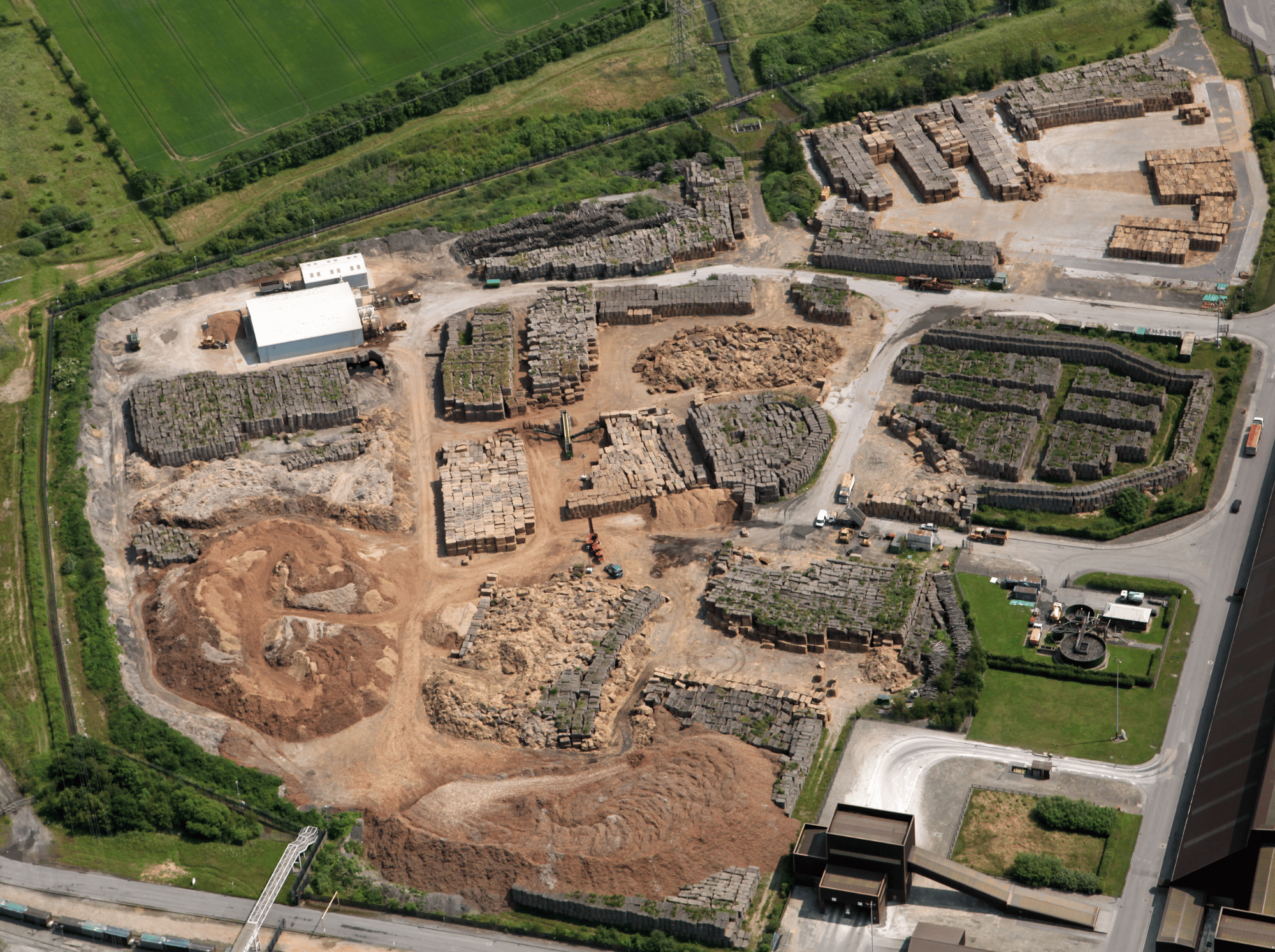
Biomass plant is UK’s top emitter
Drax tops the list as the UK power sector’s single largest CO2 emitter, despite generating only a small share of power.
Highlights
Biomass emissions
The UK’s largest single source of CO2 emissions is a wood-burning power station
Despite its limited role in the UK’s power system, burning wood is now the UK electricity sector’s second largest CO2 emitter after fossil gas.
With 12.1 million tonnes (Mt) CO2 emissions in 2022, Drax remains by far the largest single CO2 emitter in the UK power sector. The second largest emitter, RWE’s Pembroke Gas Power Station, is significantly lower at 5.3Mt CO2 emissions. Drax’s emissions are also more than double Port Talbot Steelworks, the largest industry emitter, which had 5.7Mt CO2 of emissions in 2022.
Across the UK’s electricity sector, burning wood is now the second largest CO2 emitter after fossil gas. Due to its lower energy density than fossil fuels, wood has to be burned in higher volumes to produce the same amount of energy. This means that burning wood emits more carbon dioxide per kWh of electricity than coal or gas.
Last year over 7Mt of wood (around 6.5Mt at Drax and 1Mt at Lynemouth) were burned in the UK to generate just over 4% of total UK electricity supply. Burning wood at this scale generated 13.1Mt of CO2 emissions, or 20% of UK power sector emissions. 12.1Mt alone came from one power station: Drax, the world’s largest wood-burner.
Last year emissions from burning wood in the UK power sector were over double those from burning coal, which amounted to 4.8Mt in 2022. This means that wood burning continues to be the second largest contributor to the power sector’s CO2 emissions after fossil gas.
Drax among the top 10 power plant emitters in Europe
Not just the top emitter in the UK, the potential climate impact of Drax’s biomass burning is notable even across Europe. Compared across the EU’s power sector, the power plant ranks as the eighth largest CO2 emitter. Only five German and two Polish coal plants emitted more than the UK’s Drax biomass plant in 2022.
Biomass power is classed as carbon neutral, but the science disagrees
Bioenergy companies do not dispute the scale of CO2 emitted by burning wood for power. However, they operate under the assumption that all emissions released are offset by the growth of new trees to replace those harvested for burning. This assumption is widely shared by the EU and the UK government. For this reason, wood is considered a ‘carbon neutral’ or emissions-free source of energy, making it exempt from carbon-taxation and eligible for significant public subsidy.
However, the reality of wood burning is far more complex than this. A large and growing majority of scientific evidence shows that burning wood for power is often not carbon neutral, and in some circumstances can be a worse polluter than coal. There is also strong evidence that wood-sourcing practices are damaging to natural forests, risking further ecological harm. The European Academies Sciences Advisory Council (EASAC) states that using woody biomass for power “is not effective in mitigating climate change and may even increase the risk of dangerous climate change”.
While the scientific debate increasingly suggests that burning biomass could actually be contributing to climate change, energy bill payers in the UK are bearing the cost. In 2022 Drax received an estimated £617m in public subsidy under the assumption that it provides emissions-free power.
Biomass generators are looking for new subsidies through BECCS despite doubts
Several pathways to a decarbonised UK economy, including those set out by the Climate Change Committee, rely on negative emissions generated through Bioenergy with Carbon Capture and Storage (BECCS) to meet net zero. Currently, Drax is the only company in the UK developing BECCS in the power sector and is looking to secure long-term financial commitment from the UK government to support this project.
However, the ability of a BECCS project to deliver negative emissions is entirely dependent on whether the biomass used is carbon neutral. Given the significant carbon risks of burning wood for power, Drax’s BECCS project represents a risky method of emissions removals and will also come at a significant economic cost to the public.
Before pursuing BECCS as a carbon removal strategy, the technology needs to demonstrate beyond doubt that it can deliver negative emissions. This could be pursued through a small-scale test plant, ahead of any large and long term commitment of public subsidy.
To achieve a clean power system by 2035 or earlier, the UK now needs to deprioritise technologies which risk high emissions, such as biomass. Instead, solutions that can demonstrably provide low emissions generation, including wind, solar, hydro and nuclear, should be thought of as building blocks to decarbonisation. The UK can confidently prioritise these low risk, high reward sources of generation, alongside vital technologies such as storage solutions and grid connections that will enable a transition to clean power in the targeted timeline.
Downloads
Download full report PDF
Methodology
Emission calculations
Ranking of CO2 emitters calculated through analysis of UK and EU emissions trading schemes.
The UK ETS uses the same biomass emissions factor as the EU ETS directive 2003/87/EC. Annex IV of the Directive 2003/87/EC states: “The emission factor for biomass shall be zero”.
Drax emissions are taken from the Drax Group plc Annual report and accounts 2022. Lynemouth emissions have been calculated by Ember from company generation data as emissions are not published. The combined 2022 emissions of Drax (12.1 Mt CO2) and Lynemouth (1 Mt CO2) power stations were 13.1 Mt CO2. According to UK national statistics total UK emissions from power plants in 2022 excluding biomass were 53.7 Mt CO2e. When the emissions from Drax and Lynemouth are included, they represent 19.6% of total emissions (66.8 Mt CO2).
Acknowledgements
Thanks
Thanks to Phil MacDonald, Claire Kaelin and Ali Candlin for their review and contributions.
Image credit
A.P.S. (UK) / Alamy Stock Photo
Media Coverage
Related Content





